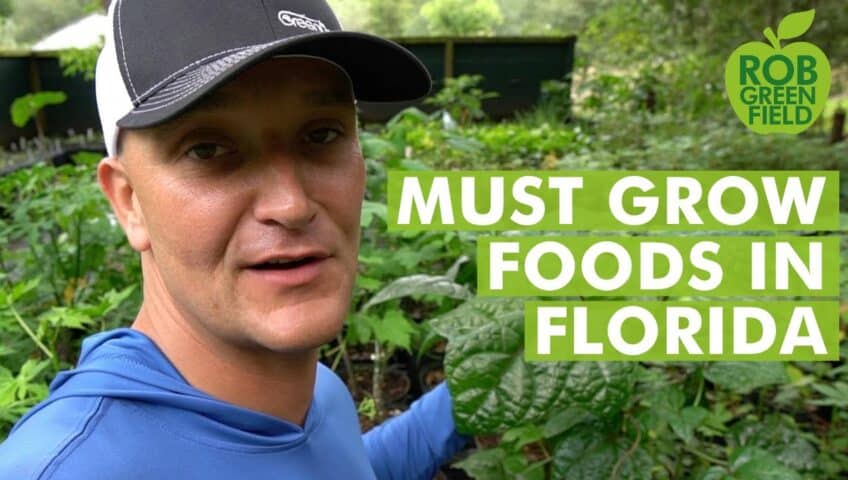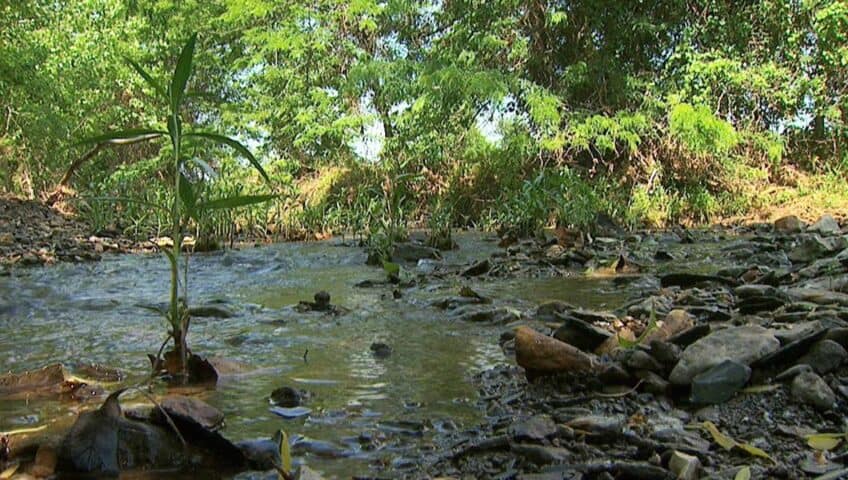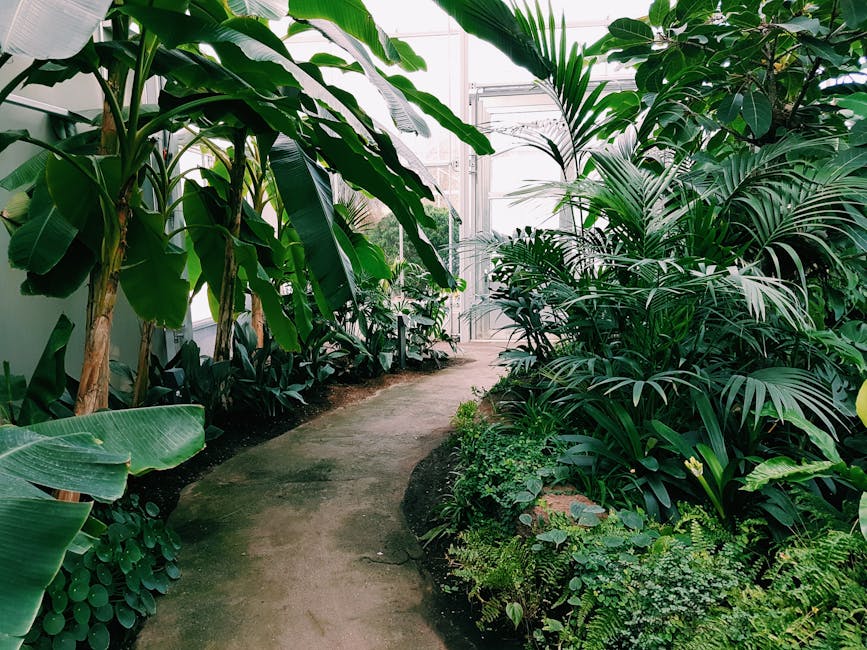
Best plants for Garden in Subtropical climates
Rob: Florida is a state where most people go to the supermarket to buy their food, but they don’t realize that they can bud most of their flesh title at home. Today, I’m really excited to have Pete Kanaris on the canal. He’s going to introduce you to 10 different shrubs that you can grow that are super-abundant and suggestible for the Florida climate to help you grow a large amount of your menu at home and be able to skip those errands to the grocery store.
This doesn’t only apply to Florida, though. Semitropical climates exist around the world — the Caribbean, Central and South America, southeast Asia, regions of africa, and parts of Australia, precise to refer some bases, are all places where this can be a super-helpful video to you.
Pete: Alright, what’s up, guys? What’s growing on? Pete Kanaris here with Green Dreams and I’m coming at you from Tampa, Florida. I’m about 20 miles north of Tampa and we’re to increase by a subtropical environment now, in 9B, and I’m taking over Rob Greenfield’s channel today. I’m putting a video together for you all on our top 10 menu promotes to grow in a subtropical environment for self-sufficiency.
These are the surpas 10 go-to food trains the hell is super-easy to grow. Something I’ll tell you guys is we is concentrated in bushes that thrive on posture, that develop with ease. Most of these cultivates are perennial cultivates. By perennial, I mean something that doesn’t need to be replanted every year, like you would an annual. This is plant it one time and routinely forget it.
Perennial stimulates are grasslands that live two or more exits. The first one I want to talk to you guys about is actually right here, behind me, hour over my left shoulder. This is chaya, or tree spinach. You were available in the big-hearted, painful foliages off of this tree. This is a really easy one to get established in your garden.
This is one that I tell people about all the time and the first thing that scares them about this one is that it has to be cooked.
Chaya does need to be cooked for about 10 hours. There’s an offgas of cyanide that comes off of there. You certainly don’t want to use an aluminum utensil, but this is a big-time staple crop in The countries of central america. This is a really easy one to transmit and start, so if you wanted to share this with your friends, you would simply take a curve like this, fasten it in the grind, take off the sprigs, and it will start growing.
It’s really that easy. The needles from this are actually quite delicious. I find this tree to be really, the spice of the needles to be hearty. They’re really army. They go really well in a soup, really well in a dish.
Also known as tree spinach. This is four times as healthful as everyday spinach and it wants to grow here.
It wants to grow now, through our red-hot summer, our humidity, and our full sunbathe. The# 2 seed I want to talk about that is a must-have for your garden-variety is sitting here behind me. This is moringa oleifera.
This one likes full sunlight. If you noticed, I had that chaya in a dappled brightnes, understory statu. This one wants to be out in full sun. I look at this tree as like having a health food store in your back yard. This one is like 22% protein, by heavines; 68 different antioxidants; four times the calcium of milk.
I could go off about all the various minerals and nutrients that are inside of this plant. This one is literally one of the fastest growing trees we also have on the farm. Commercially, they originate these trees about a paw apart and they snip off the brand-new increment every week. Most generally, you would dry those foliages and pulverize them, but you were able to formulated this fresh into a salad.
You could innovate this fresh into a smoothie.
You could destroy this fresh, like this. The tree is also known as the horseradish tree. That’s because the twigs can be a little bit on the spicy neighborhood. I opted this as a add-on. I bid this in a smoothie.
I find it to be a little bit on the strong face, but it abounds so well and is so nutritious. The pulverization from this tree spreads for $30 -4 0 — I retain when it was $60 a pound. So, super-nutritious. My# 3 must-grow crop for Florida would be what Rob would like to call yucca or cassava or manihot. We was a lot of notes on that one from the videos we did together.
This is a must-grow crop, a super easy to grow crop down here in Florida. This is what they would shape tapioca sweet from. Cassava is a root crop and it’s really easy to get started in the garden-variety. It’s one that you literally, just like I represented you on the chaya, you take a decorating of, so probably something a little older than this.
You want three nodes above and three nodes below the soil.
You simply remain this person in the grind and it’ll grow. Often, cassava is about an 8-9 month harvest. You’ll get a root crop off of that. I precisely did a specific video on cassava, on concoct it, on harvesting it, on germinate hand-picked potpourruss, with my good friend, Josh, from Hart. If you implore more detail on that, pate over to my canal and you’ll revalue more specific stuff with Josh — how they cook it, how they mean it.
I had cassava dine while I was there. There are many different ways to eat this. Cassava? Must grow it. The fourth pasture I wants to speak to you about today are sugared potatoes.
Many parties, when you think sweet potato, “youre thinking about” that regular orange sugared potato, but there are hundreds of heirloom potpourruss of sugared potato.
There are white sweet potatoes, violet sugared potatoes , regular orange sugared potatoes, but what a great deal of parties don’t know is you can eat the needles and the root of a sugared potato. Sweet potatoes exclusively happen to be one of the most nutritious prepareds in the world countries for the above reasons. What I really like to do is pull all of these young leaves off of here. This isn’t a good example of a sugared potato patch.
I accurately have a couple of slips that we seeded now maybe a month ago, that are starting to take over, but I can tell you, if I came back in this area in simply a few cases occasions pouches weeks, this would be a solid sea of green.
The leaves are just starting to fill in. You would start sugared potatoes by buying truly organic sugared potatoes at the convenience store, appending them in some grease, obliging the buds come off and you dissolved those off and that’s what would be called a slip. If you don’t start it from a potato, you actually order slips in spring from a honied potato camaraderie. Like I said, there are many different smorgasbords and types.
Not alone do you get this awesome potato at the end of the season, which is really fun to dig up, to gather them out of the ground.
You don’t have to eat them right away. They can previous 6-9 months inside of your palace, but during that fraction know, you can eat the foliages off the candied potatoes. So, sweetened potatoes are super-exciting for me because I miss the spice of the greens. They’re great sauteed with just a little salt and pepper on them, make a great side dish, and then you get potatoes at the end of the season.
Digging up sugared potatoes is one of my favorite things on “the farmers “. My# 5 favorite perennial vegetable to grow down here in the nutrient timber is sisso spinach or Miami spinach. This one makes a really nice ground cover. It can take full sunbathe or dappled light-colored. You can be found in I mistakenly rent a little of that root out.
I can lodge it back in the anchor. It will easily bud. “Thats one” that doesn’t need to be cooked. It is predicted to be eaten fresh. It genuinely has a nice texture to it , not more slimy, moves really great in a salad, spreads really great time ingesting it fresh or in any type of dish.
This is a great perennial vegetable that I embed one time and it’s been here for multiple years, that’s here all term long if I want to come outside and have something to add as a light-green in a salad or to a stratum, so sisso spinach is definitely worth proliferating if you’re in a subtropical environment. We’ve got one or two collectings of this one. It is just great. Like I said, it has a nice crunch to the leaf, it’s not more creepy. It makes a great perennial vegetable to add to your backdrop, so# 5.

My# 6 must-have for a sustainable garden in Florida is definitely going to be katuk. Katuk is an awesome perennial vegetable, super-high in protein, very similar to moringa, where it’s like 20% protein and it recognise yummy. It literally savor like fresh peas. It’s one that are actually has a nice flavor raw. Kids like it.
Everyone I’ve given it to is like, wow, that smacked pretty good. I have a variegated mixture and a clam jumble. They both thrive on disrespect. These blushes never get irrigated. These botanies never get fertilized.
There is no irrigation now. They live and flourish on forget all time long.
With a lot of these perennial vegetables — sisso spinach, moringa, katuk — that young flourishing, that brand-new expand that’s coming off the top is going to be the most tender, the softest. So, as I steer my state down the gras, these sole foliages are going to be a little tougher. They’re still great to eat.
They can still go in a dish. Probably better in a cooked nutrient to break them down a bit, but for eating fresh, I find the raw tips-off are always best. So, katuk? Grow it. My# 6 body pasture to grow here in Florida, which probably would not often be looked at as a vegetable, is papaya.
Papaya was something that I certainly knew, spending time with Rob. It’s something he usually realise in his saucers. I recall my favorite was his Thai coconut curry with the papaya in it. I love loot papaya. I think it’s great as a vegetable.
I experience papaya salad at a Thai restaurant and I admire the spice of a good, ripe papaya as a result. Papayas don’t have to be eaten ripe; they are able to eaten light-green, like a vegetable.
We’re starting to get some little papayas here and you can get these while they get larger and they’re light-green, or you can wait until they get ripe and eat it as a return. This one doesn’t have a lot of return on it right now. The other ones I have are towering and I need to cut them back.
You can chip your papayas back every couple of years. One of my mentors, a individual I boast a great deal on my canal, is Jim Kovaleski. He’s got a papaya tree in his heart plan that’s 5-6 years old, so these trees can previous a while. They can be perennial. They can die back if you’re further north, but you can start them in your greenhouse and get them outside independence after that last frost and potentially get a lettuce outcome in six months, so papayas are worth growing.
Find a good one, develop the grain. Easy to get started. Highly indicate growing it .# 7, I’ve been really busy the last couple of weeks with the nursery business and all of my seeds out in the sand for these last three have been cut down for decreases and dissemination, so I’m over here, in the nursery, where I have some better examples.
What I wants to speak to you about now is appetizing needle hibiscus.
That’s this big-leafed shrub behind me. This can be used as a wrapping. It is likely to be eaten fresh, chopped up in a salad, be used as a dark-green. “Thats one” that might be a little bit more on the mucilaginous line-up, perhaps rather creepy, some would say. That’s really good for liner our insides.
This variety is actually little sinister than the variety I have over here, on this gradient. This one clearly has a little bit more mucilaginous to it. I have a couple of different picks. I have this skinny-leafed variety. I have this fat-leafed variety.
There are a couple of different mentions for this one. I like to really call it lettuce leaf hibiscus. I really like this one as a rug. If you missed a clam deflect, something that’s gluten-free, you can grow this for your wrap. The# 9 must-have for the sustainable garden-variety in Florida, “thats one” that the youngsters really like: cranberry hibiscus.
The leaves are beautiful, neat deep red.
Some defendants call that like a mahogany. These are honied. They’re sour. They’re yummy accurately raw.
They realise neat in a salad, if you chop them up. My favorite thing to do is, if I’m making a sandwich or knapsack something for the working day, I’m going to be on the road, I come out and get a handful of fresh foliages and, just like I talking about with the katuk, a so much younger leaves, the fresh rise, like this is a really fresh cherry-red one. You can see this is an older leaf. You were available in a colouring estrangement. You see how that one is pale and that one is dark red?
The younger parent is always going to be the most tender and the sweetest. Good-for-nothing wrong with the old-fashioned proliferation; it’s just not going to be the best, flavor-wise. So, cranberry hibiscus is not only a stunner in the landscape, a pretty-looking plant, but it has a really nice delightful violence and I guarantee if you give it to one of the girls, they’re going to enjoy it too.
This one has been a perennial now. It will schedule flowers.
All hibiscuses have edible buds. You can eat the flower on this, but after it’s done slotting a heyday, it’s going to set seed that you could save to replant if you’re in a more northern list atmosphere. So, cranberry hibiscus is another must-have. If you’re into horticulture down now, in Florida, and you don’t have it, this is one to add to your design. Last-place, but not least, must-have perennial for a sustainable garden-variety in Florida or in any subtropical environment is Okinawan spinach.
This is one that we’ve been propagating really hard the last few weeks. This is also one that the squirrels like, that I have a hard time continuing going in the bottoms, but I really like the spice of it. It’s really nice to eat fresh. It’s nice to eat cooked. It’s nice to throw in the towel a dish.
It’s very similar to the longevity spinach, which is right here, behind me, but I guess the longevity spinach is a little stronger, a little more like a prescription. The squirrels don’t like it as much, it is therefore reforms now a whole lot better. I’ve noticed that we plant these two for patrons all the time, longevity spinach and Okinawan spinach. The Okinawan is a little prettier. It’s got some purplish-red to the underside of the leaves.
It’s hit or miss. Sometimes the Okinawan does better on your website, sometimes the longevity does better on your website. I would say both of these are a tie for #10, but this one perceives a little better. I hope you guys enjoyed this video. Thank you, Rob, for the opportunity.
It’s been a blast. I can’t wait to work with you again. I can’t wait for your next challenge. I can’t wait for you to get back to Florida so we can do some levity cloth. Thank you guys so much for following.
What we are happy to do around here is pound dirt! Rob: I hope you got a lot of muse and education out of this time with Pete. He is a wealth of learning. He is an expert in pulling nutrient and he salves a good deal of parties to do this, both in person and through his YouTube channel. Make sure to are engaged in his channel.
The links to follow him are in the description. If you got a lot out of this video, make sure to subscribe to this channel as well, where I’ll have many more patrons to come, as well as videos led by me.
Also, share this, mention, and like it to spread it out into the world and get this information out there to people who need it, but don’t know it’s there. I love you all very much and I’ll see you again real soon. Subtitles by the Amara.
org community.

